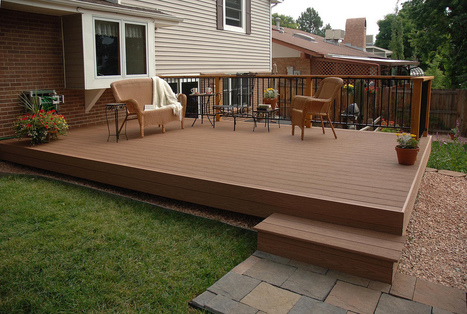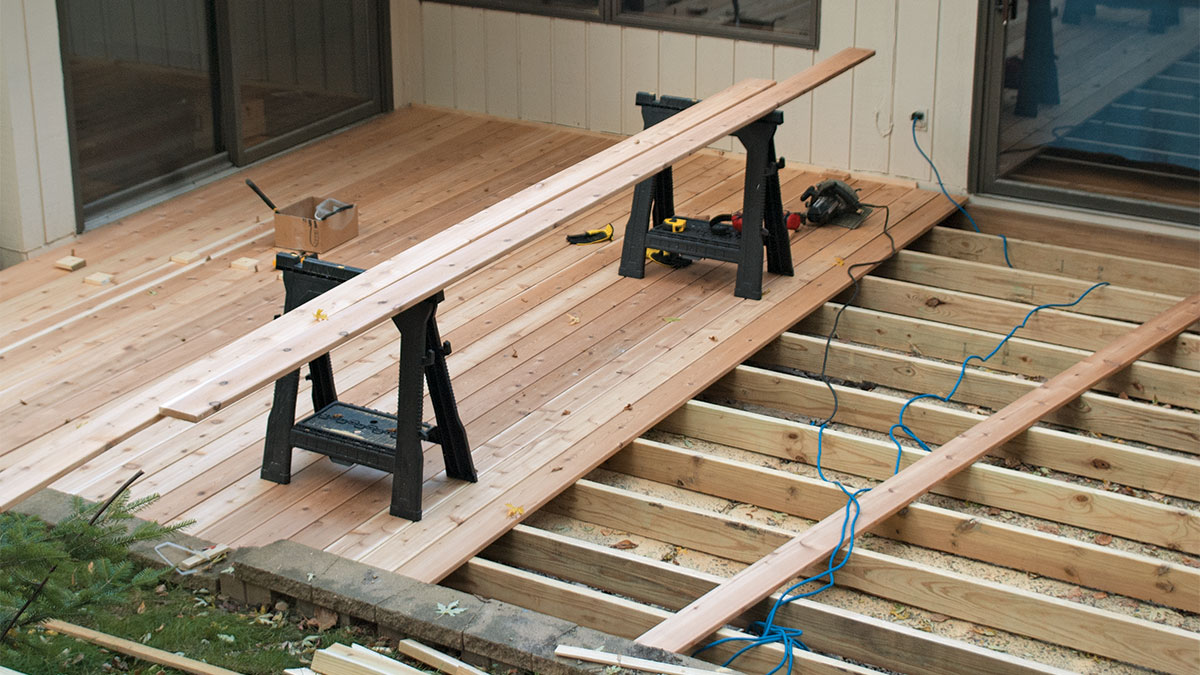How to Pick the Right Materials for Your Deck Setup Project
Selecting the appropriate materials for your deck installment job can seem complicated. There are numerous elements to consider, from resilience and maintenance to aesthetic appeals and ecological effect. The choice in between standard wood and composite materials, each with its own collection of benefits and drawbacks, can be especially challenging. The key is to balance your budget plan, layout preferences, and way of living needs to create a deck that will certainly enhance your exterior room for years to find.
Understanding the Different Kinds Of Deck Materials
When beginning on a deck setup job, the option of materials comes to be a crucial choice. Composite products, on the various other hand, are a blend of wood and plastic, offering longevity and resistance to weather elements. By comprehending these distinctions, home owners can make a more informed decision on the most appropriate deck material for their specific demands.
Assessing the Sturdiness and Upkeep Demands of Deck Materials
Assessing the sturdiness and upkeep demands of deck products is an essential action in deck installation. Toughness involves the material's capability to stand up to extreme climate conditions, damage, and its longevity. As an example, cedar and redwood are naturally resistant to rot and insects, making them durable choices. On the various other hand, pressure-treated wood, while long lasting, might require more upkeep because of its susceptibility to cracking and contorting.
Recognizing maintenance requirements is equally important. Some products need normal sealing or staining to maintain their appearance and withstand moisture damage, while others, like composite decking, demand much less maintenance. By assessing these elements, one can choose the most suitable decking material, making certain an equilibrium in between sturdiness, upkeep demands, and visual charm.
Cost Evaluation: Comparing Wood and Compound Decking
Although cost might initially feel like an additional concern, it is a considerable element when comparing wood and composite decking. Wood, generally a less costly alternative, has a lower ahead of time price. Over time, maintenance expenditures can accumulate, possibly making timber extra pricey in the long run. These maintenance expenses may include discoloration, securing, or changing damaged boards. On the other hand, composite outdoor decking, while costlier initially, requires less maintenance, possibly lowering lasting expenses. It's important to keep in mind that composite decking isn't impervious to put on and tear, and replacement prices can be high. Prospective deck owners have to consider their budget and willingness to keep their decks when deciding between wood and composite decking.
Aesthetics and Layout Flexibility of Decking Products
While price is an important consideration, the visual appeal and style adaptability of decking products likewise play a substantial duty in the decision-making process. Various materials supply varying levels of visual allure. All-natural wood outdoor decking offers a classic, timeless appearance, while composite materials supply a wide variety of shades and textures to match diverse tastes and designs. Likewise, style versatility describes the ability to form and control the decking product to meet particular design demands. Timber, for circumstances, provides high design versatility due to its ease of reducing and shaping. Composite products, while less flexible in layout, are still versatile sufficient for most deck designs. These factors, for that reason, are vital factors in the selection of outdoor decking product.
Ecological Influence of Decking Products
When selecting decking materials, one must think about not only aesthetic appeals and toughness, yet also the ecological impact. It's crucial to examine the sustainability of materials and explore recycled outdoor decking choices. Recognizing the possible impact on local communities will make certain a much more ecologically accountable choice.
Analyzing Product Sustainability
In the realm of deck construction, examining material sustainability is a crucial action. This involves assessing the ecological impact of each prospective material, taking into consideration elements such as the energy required for its manufacturing, its carbon impact, and its end-of-life disposal or recycling choices. As an example, wood is an eco-friendly source, but unsustainable logging practices can lead to deforestation. Additionally, composite decking materials often combine timber and plastic, lowering the need for new timber but raising reliance on fossil gas. Aluminum and other steels may be a lot more sturdy and recyclable, yet their removal and processing can be energy-intensive. Hence, the selection of decking materials ought to balance performance, visual appeals, cost, and sustainability to make certain a liable and durable installation.
Recycled Outdoor Decking Options

Compound decking is particularly preferred because of its sturdiness and ease of maintenance. It's resistant to rot, pests, and fading, making it a lasting choice. Recycled plastic outdoor decking, on the other hand, is very durable and needs minimal upkeep. While these products may bring a higher initial price, their durability and lowered ecological impact make them a sensible financial investment for the eco-conscious house owner.

Effect on Local Ecosystems
While the advantages of making use of recycled products for outdoor decking can not be overstated, it's similarly vital to take into consideration the broader environmental implications of these options. Appropriate disposal of old decking is important to reducing garbage dump waste. Basically, an eco-conscious deck job needs cautious product selection, lasting sourcing, and responsible disposal.
Making Your Decision: Tips for Picking the very best Deck Products
As the short article shifts into the subtopic of "Making Your Decision: Tips for Selecting the very best Deck Materials", it is essential to understand the selection of deck products readily available. Striking a balance between durability and looks is important in this selection process. The complying with conversation will certainly more information lead readers in making an see it here informed choice based upon these crucial factors to consider.
Recognizing Different Deck Products
The job of choosing the best products for your deck installment can seem intimidating due to the vast selection of choices available. Plastic or PVC decks are even more durable and need much less upkeep than composite materials, however they can look less all-natural. Aluminum decks are solid, lightweight, and resistant to rot, yet they are additionally the most costly alternative.
Toughness vs. Aesthetic Appeals Balance
Stabilizing durability with visual appeals can be an obstacle when choosing deck materials - deck installation austin tx. High-traffic locations might necessitate long lasting materials like composite decking, which withstands wear and tear however may deck installation austin tx do not have the all-natural elegance of wood. Home owners need to strike a balance, considering both the deck's practical demands and their visual preferences.
Final thought
To conclude, selecting the right materials for your deck setup project requires mindful consideration of aspects such as durability, upkeep, price, visual appeals, and environmental impact. Whether you choose for typical timber or composite products, your selection must align with your budget plan, style preferences, and lifestyle. Inevitably, the finest outdoor decking product is one that enhances your outdoor space and offers satisfaction for several years to come.